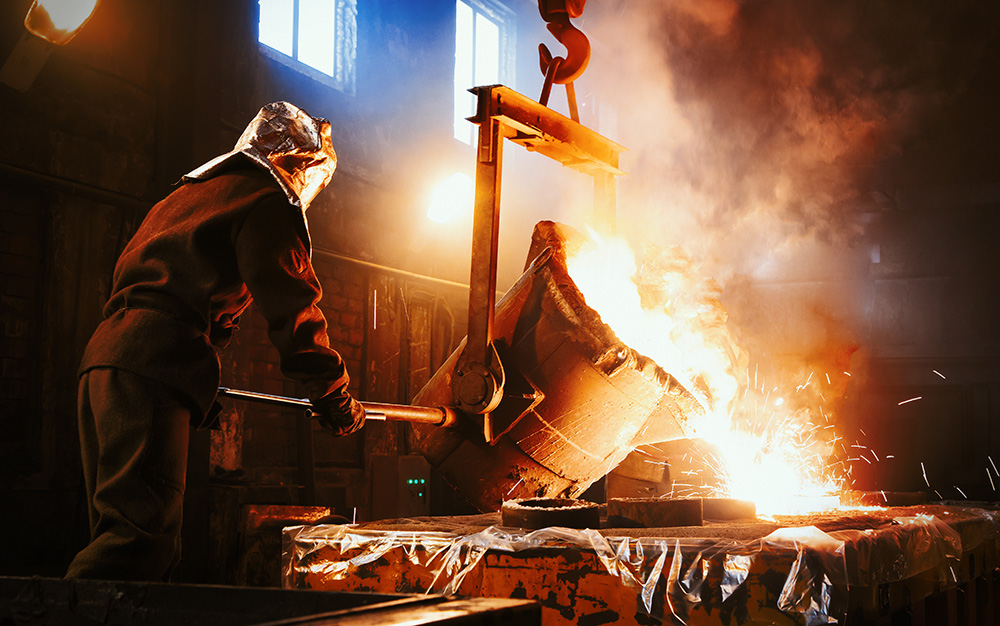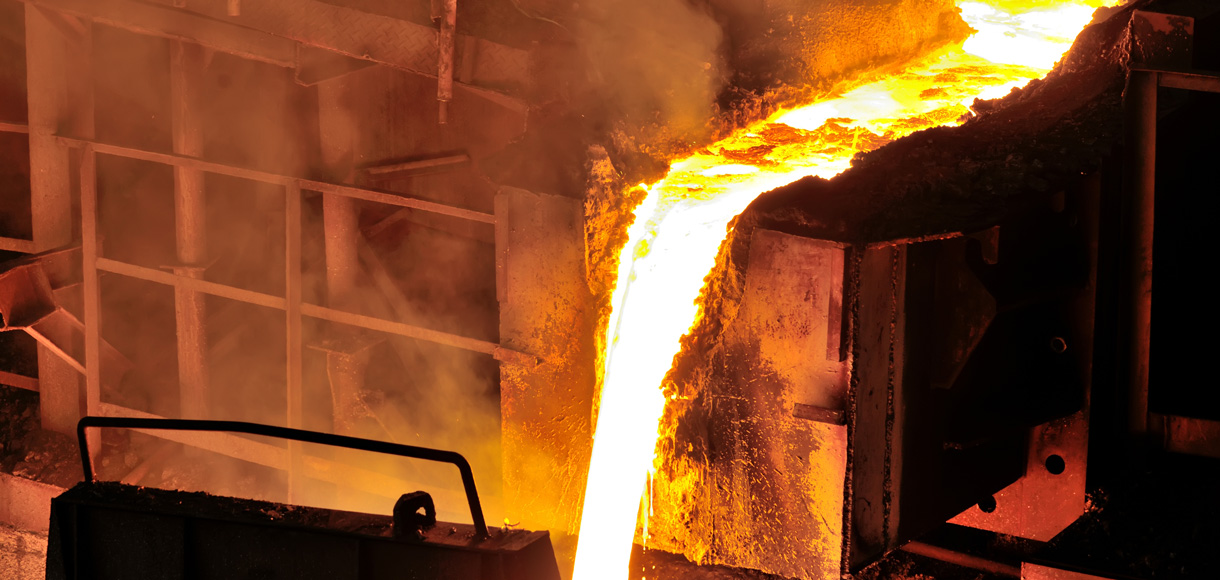Definitive resource to sustainability practices in the Metal Foundry industry
Wiki Article
Discover the Ingenious Techniques Made Use Of in a Metal Foundry for Superior Casting Results
In today's affordable manufacturing landscape, metal foundries are significantly taking on ingenious strategies to boost casting outcomes - Metal Foundry. Advanced computer simulations permit exact modeling of molten metal actions, while 3D printing allows rapid manufacturing of complicated molds. Additionally, eco-friendly materials and automation streamline procedures. These developments guarantee significant enhancements in performance and quality assurance. The influence of these technologies on sustainability and production practices stays to be totally explored.Advanced Computer Simulations in Metal Casting
Advanced computer simulations have revolutionized the metal casting process by enhancing accuracy and performance. These innovative tools enable engineers to develop digital designs of actors elements, enabling them to evaluate and anticipate the habits of molten metal during the casting phase. By simulating various criteria such as temperature level, circulation rate, and air conditioning prices, producers can identify possible issues prior to physical production starts.This positive strategy minimizes waste and lessens expensive errors, inevitably bring about boosted item quality. Furthermore, simulations promote the optimization of mold styles, ensuring that they meet the specific requirements of each project. The combination of computational liquid characteristics (CFD) and finite element evaluation (FEA) more adds to the precision of these simulations, giving insights that were formerly unattainable. Therefore, advanced computer simulations have come to be an essential part of contemporary metal foundries, greatly progressing the market's abilities.
3D Printing for Molds and Patterns
3D printing has actually emerged as a groundbreaking technique for developing molds and patterns in the metal foundry market. This technology allows the rapid production of intricate geometries that conventional production methods have a hard time to achieve. By using additive production, foundries can create complex layouts with reduced lead times and product waste. The capacity to create mold and mildews as needed allows for higher versatility in style versions, promoting faster prototyping and alterations.Moreover, 3D printing can use a range of products, including plastics and metals, customized to specific casting needs. This adaptability improves the accuracy of molds, causing exceptional casting outcomes with enhanced surface area coatings. Additionally, the decrease in the number of parts required streamlines setting up procedures, better enhancing manufacturing performance. As foundries remain to embrace 3D printing, they are positioned to redefine industry standards, leading the way for technology and enhanced efficiency in metal casting operations.
Eco-Friendly Products and Processes
As the metal foundry market faces raising pressure to minimize its environmental footprint, the adoption of environmentally friendly materials and processes has actually ended up being important. Shops are now checking out sustainable alternatives to typical products, such as using recycled metals and bio-based binders. These products not just decrease waste yet also lower energy consumption throughout manufacturing.In addition, innovations in sand spreading techniques have resulted in using synthetic sands that are less hazardous to the environment. Shops are additionally implementing ingenious procedures like molten metal treatment that lowers exhausts and enhances the top quality of cast products.
In addition, water-based finishes have actually replaced harmful solvents, promoting a much safer job atmosphere (Metal Foundry). By integrating these green techniques, metal foundries can considerably decrease their ecological impact while keeping top notch spreading results. This change not only benefits the setting yet likewise aligns with the expanding consumer demand for sustainable manufacturing options
Automation and Robotics in Foundry Workflow
While the metal foundry market welcomes advancement, the assimilation of automation and robotics is changing procedures greatly. Automated systems streamline processes such as mold making, metal putting, and casting completing, considerably improving effectiveness. Robotics assist in the my website handling of hefty products, decreasing the threat of workplace injuries and making sure safer atmospheres.
Additionally, the use of automated guided vehicles (AGVs) maximizes material transportation within facilities, guaranteeing timely delivery of elements to suitable workstations. By executing these innovations, foundries can adjust to fluctuating demands with higher agility, eventually causing improved success and competitiveness in the market. As automation and robotics continue to progress, they hold the possible to redefine conventional foundry techniques and drive more advancements in casting techniques.
Real-Time Surveillance and Quality Assurance Techniques
The improvements in automation and robotics have paved the means for a lot more sophisticated methods to high quality guarantee in metal foundries. Real-time surveillance systems utilize innovative sensing units and data analytics to track important parameters throughout the spreading process. These systems continually assess variables such as temperature, stress, and product structure, allowing prompt detection of variances from developed criteria.Quality control methods now incorporate artificial intelligence formulas that assess historical data to predict potential flaws prior to they happen. This proactive approach minimizes waste and boosts overall manufacturing efficiency. Furthermore, integrated responses loops enable quick modifications, guaranteeing that each spreading satisfies rigorous high quality needs.
The implementation of digital doubles-- digital reproductions of physical properties-- has likewise reinvented quality control, permitting engineers to simulate and enhance procedures in real-time. With each other, these ingenious strategies significantly enhance the dependability and high quality of castings, setting new market standards in metal foundry procedures.
Often Asked Inquiries
What Kinds of Metals Are Typically Cast in Shops?
Typically cast metals in foundries include light weight aluminum, iron, brass, and bronze. Each metal shows one-of-a-kind residential or commercial properties, making them suitable for numerous applications, such as automobile parts, machinery, and imaginative sculptures, improving their adaptability in manufacturing.
The length of time Does the Casting Refine Typically Take?
The casting process typically takes a number of hours to days, relying on aspects such as the complexity of the mold, type of metal used, and air conditioning requirements. Each stage influences the total duration noticeably.What Security Steps Remain In Location for Foundry Employees?

Just how Are Problems in Castings Identified and Addressed?
Defects in castings are identified via visual inspections and non-destructive screening techniques. Once spotted, foundry employees resolve them by article source refining procedures, changing product compositions, and applying restorative measures to guarantee quality and compliance with criteria.What Is the Cost Variety for Metal Casting Providers?
The price range for metal casting services normally differs between $1 to $10 per extra pound, relying on factors such as product kind, complexity of the design, and production volume, influencing overall rates substantially.In today's affordable production landscape, metal foundries are increasingly embracing cutting-edge methods to improve casting results. As the metal foundry market faces enhancing stress to lower its ecological impact, the adoption of environmentally friendly materials and processes has become vital. Factories are now discovering lasting alternatives to standard materials, such as using recycled metals and bio-based binders. By incorporating these green methods, metal foundries can noticeably decrease their eco-friendly influence while preserving top quality casting results. The advancements in automation and robotics have actually led the way for much more innovative methods to top quality assurance in metal foundries.
Report this wiki page